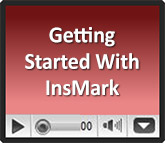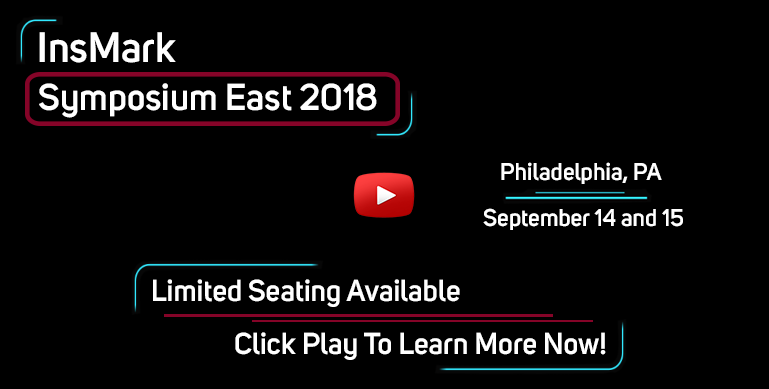(Presentations were created using the InsMark Illustration System.)


Note from Bob Ritter: This Blog can obviously apply to other family members, but as a father of five girls, I couldn’t resist framing it with a daughter.
This analysis involves business succession from Dad-to-Daughter, deductible liquidity for the business, income for Mom, and tax free retirement cash flow for Dad. That’s a mouthful, I know, but it really works that way.
Assume that Dad, a key executive of a closely-held C Corporation, age 45, is also the 100% stockholder of the Corporation. Dad and Mom have an adult daughter, age 26, who will operate the business after her father’s death.
Because Dad is also a key executive of the business, the Corporation will experience a financial loss at his death. Also assume that Mom will have a continuing need for income after his death.
One way to meet the cash needs of the Corporation and the income needs of Mom is to have the Corporation own a life insurance policy on Dad that pays sufficient death proceeds to provide for the needs of the Corporation and Mom.
This is a common recommendation of many advisers; however, this corporate-owned life insurance approach presents the following three problems:
- Key executive life insurance premiums are not deductible;
- Mom inherits paper stock with limited non-deductible dividends the only source of income from that stock;
- Corporate alternative minimum tax of 15% could be imposed on any policy death proceeds.
Alternate Key Executive Insurance Technique
There is a better way to meet the cash needs of the Corporation and the income needs of Mom by using a planning strategy known as the Alternate Key Executive Insurance Technique. Following are the steps for implementing this arrangement:
- Dad owns the life insurance policy with Mom as beneficiary.
- The Corporation bonuses Dad an amount sufficient to pay the premiums due on the policy each year. This bonus is taxable as compensation and is deductible by the Corporation as an ordinary and necessary business expense.
- Dad borrows funds from the policy to pay the tax on the bonus.
Note: This is identical to the “Free Dog” arrangement we described in Blog #2. Some life insurance companies allow policy loans in the first year. In this event, loans to cover the income tax on the bonus should be illustrated starting in year 1. From a cash flow perspective, loans starting in year 2 (the most common carrier option) should generally be satisfactory due to the delay between when the bonus is paid and the income tax is due. - Dad (and, by extension, Mom) has personal access to policy cash values for tax free retirement cash flow.
- At Dad’s death, the proceeds are sheltered from estate taxes by the unlimited marital deduction. Mom collects the life insurance proceeds and loans it to the Corporation at a fair market rate of interest using a demand loan agreement. This gives the Corporation the liquidity it needs to continue business operations. If the parties desire, the Corporation may assign corporate assets as security for the loan.
- Mom still receives all the stock of the Corporation from Dad’s estate and is now 100% owner of the Corporation. The stock transferred to Mom is sheltered from estate taxes at Dad’s death by the unlimited marital deduction.
- The Corporation provides an income stream to Mom by paying her the interest due on the loan each year, keeping the principal loan amount intact. (The interest is deductible to the Corporation as interest expense.)
- At Mom’s death, the Corporation either pays back the loan principal to her estate, which is then distributed to their children or, if the Corporation still needs the money, the loan receivable can be transferred to the children (with the Corporation then making loan repayments to the children over time).
C Corporation Summary
The Alternate Key Executive Insurance Technique permits the family to achieve its objectives of having cash to continue business operations at the death of Dad, providing income by way of loan interest to Mom that is deductible to the Corporation, and avoiding the corporate alternative minimum tax on the life insurance death benefit. The strategy also provides Dad with tax free loans from the policy to fund both the income tax on the bonuses used for premium and supplemental retirement income.
Click here to see an illustration of a policy insuring the key executive/shareholder using this strategy.
 Documentation for the Alternate Key Executive Insurance Technique is also available in InsMark’s Documents On A Disk™ in the Key Employee Insurance Plans section of specimen documents. A variation with superb tax results is also provided in that same section in which an irrevocable trust is owner and beneficiary of the life insurance.
Documentation for the Alternate Key Executive Insurance Technique is also available in InsMark’s Documents On A Disk™ in the Key Employee Insurance Plans section of specimen documents. A variation with superb tax results is also provided in that same section in which an irrevocable trust is owner and beneficiary of the life insurance.
Note re S Corporations and Limited Liability Companies: If the business is an S Corporation or a Limited Liability Company where the business will experience a financial loss at the death of a key owner, the same procedure could be used for the owner to meet the cash needs of the business and the spouse. Exception: The bonus for premium and policy loans to cover the income tax on the bonus would not be efficient with these “pass-through” firms. The cash value from a personally-owned policy would be, however, a terrific source of personal, after tax, retirement cash flow, and the policy death proceeds paid to the spouse could be used as a source of needed loans to the business with income to the spouse by way of loan interest likely well in excess of what might otherwise be personally available. This same procedure would work with the irrevocable trust variation noted above with premiums gifted to the trust by the parents.
InsMark’s Referral Resources
(Put our Illustration Experts to Work for Your Practice)
We created Referral Resources to deliver a “do-it-for-me” illustration service in a way that makes sense for your practice. You can utilize your choice of insurance company, there is no commission split, and you don’t have to change any current relationships. They are very familiar with running InsMark software.
Please mention my name when you talk to a Referral Resource as they have promised to take special care of my readers. My only request is this: if a Referral Resource helps you get the sale, place at least that case through them; otherwise, you will be taking unfair advantage of their generous offer to InsMark licensees.
Save time and get results with any InsMark illustration. Contact:
- Ben Nevejans, President of LifePro Financial Services in San Diego, CA.
The illustration module for the policy associated with the Alternate Key Executive Insurance Technique is the Executive Security Plan on the Executive Benefits tab in the InsMark Illustration System. For a license to use this System, contact Julie Nayeri at julien@insmark.com or (888) InsMark (467-6275). Institutional inquiries should be directed to David A. Grant, Senior Vice President – Sales at (925) 543-0513 or dag@insmark.com.
InsMark’s Digital Workbook Files
If you would like some help creating customized versions of the presentations in this Blog for your clients, watch the video below on how to download and use InsMark’s Digital Workbook Files.
Digital Workbook Files For This Blog
Download all workbook files for all blogs
|
Note: If you are viewing this on a cell phone or tablet, the downloaded Workbook file won’t launch in your InsMark System. Please forward the Workbook where you can launch it on your PC where your InsMark System(s) are installed. |
![]()
More Recent Articles:
Blog #21: Equity Rescue Made Easy
Blog #20: Could Your Case Be Going Down The Drain?
Blog #19: How to Solve the Toughest Part of Your Business
Blog #18: Premium Financing Meets Wealthy And Wise®
| 3 Reasons Why It’s Profitable For You To Share These |
| Blog Posts With Your Business Associates and |
| Professional Study Groups (i.e. “LinkedIn”) |
Robert B. Ritter, Jr. Blog Archive




